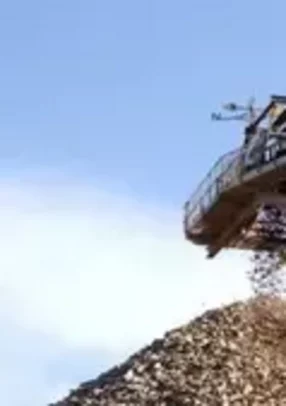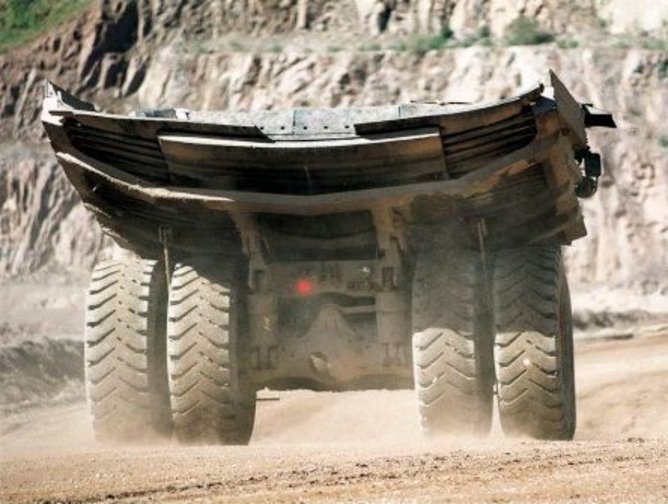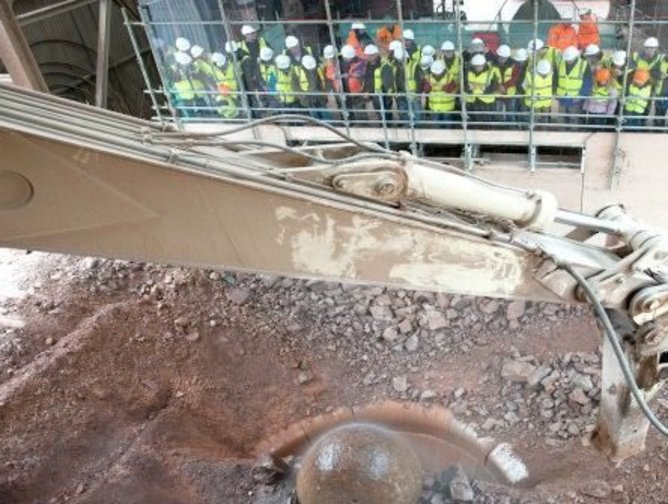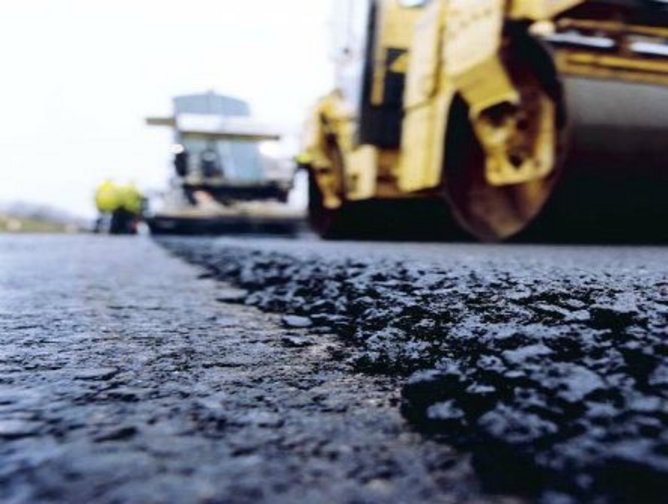
Lafarge Tarmac is Concreting a Sustainable Path for a Constructive Future
Lafarge Tarmac was formed in January 2013 as part of an independent joint venture between two of the UK’s most influential construction companies - Lafarge UK and Tarmac. Both companies have a long-standing and significant presence in the construction industry, with the latest merger enabling it to strive for a more sustainable and efficient future.
Collectively, Lafarge Tarmac has a broad portfolio of products and services. It is renowned for its high quality aggregates, asphalt, cement, ready-mix concrete, lime and lime powders and notably, operates the region’s leading road contracting business, which provides surfacing and maintenance services including winter maintenance and traffic management. Furthermore, the company operates one of the largest waste and recycling operations in the country.
Lafarge Tarmac delivers innovative, sustainable and high quality solutions to the market and boasts unrivalled knowledge of the sector. Its turnkey solutions make it a critical construction partner to national developers and local ‘DIYers’ alike.
Lafarge Tarmac is a pioneer in the construction industry; it has received global recognition for its ability to push boundaries when it comes to product development and innovation but perhaps its most creditworthy pursuit is the one for sustainable development. With one of the UK’s largest land portfolios, ecological land management is critical for future success at the company. However, Lafarge Tarmac is also dedicated to utilising its industry expertise to design and deliver a more sustainable built environment as well.
Building with Sustainability in Mind
Approximately three years ago, the company began to explore how different construction methods and materials could enhance the sustainable properties of major infrastructure, be that residential buildings, offices or schools for example. The aim being to gather a better understanding of how construction materials could perform in the built environment of the future, and importantly how these properties could be manipulated or developed to achieve the desired outcome without using carbon intensive methods.
UK building regulations tend to encourage developers to insulate buildings and then heat or cool the air inside using central heating or air conditioning, however as Stuart Wykes, Director for Land and Natural Resources at Lafarge Tarmac says, “this is inefficient and carbon intensive over the lifetime of a building.”
With this in mind the company began developing the Waterford Hamel Project in Hertfordshire - a zero-carbon housing concept, which consists of a scalable development of 8 homes capable of near-zero energy bills. The development is a blueprint for how the housing industry can transition to all new homes being ‘zero-carbon’ from 2016 in line with government requirements.
As part of this project, the company worked with architects that specialise in thermal mass to develop houses made of concrete – the inherent ability of which is to absorb and release heat, thus regulating the internal temperature of a building. The concrete floors, walls and ceilings act like storage radiators, absorbing the sun’s heat and releasing it into the room as and when it is needed. Using no energy other than the constant solar supply and the people within a building, this method has the potential to save both fossil fuels and money in one of the most innovative developments seen in the residential sector.
“It is important to consider the energy efficiency and carbon imprint of any building over the course of its lifetime. The energy and emissions used during the construction phase of a home only represent a tiny proportion of the total usage,” says Wykes.
Developing Materials and Methods for Outstanding Results
The Waterford Hamel Project is already in development and awaiting planning. Upon completion, Lafarge Tarmac expects them to be the highest performing, commercially viable residential buildings available on the market and this is testament to the company’s commitment to optimising the application of its products. Furthermore, the environmental footprint of the build process itself is taken into consideration and analysed.
Environmental consideration doesn’t end with infrastructure. At the top of Lafarge Tarmac’s comprehensive mineral development portfolio sits Mountsorrel Quarry in the heart of England, where, for many decades the company has taken advantage of the country’s natural geological make-up to produce vital construction materials. The quarry is the deepest of its kind in the UK.
One hundred and fifty million tonnes of aggregate is quarried each year in the UK, which is pumped back into the construction industry and Lafarge Tarmac extracts a significant proportion of the market’s supply.
At Mountsorrel, Lafarge Tarmac quarries granite and has a purpose-built railway, which allows it to ship materials quickly, efficiently and importantly sustainably to the Home Counties. One thousand two hundred tonnes are shipped out by train per trip to 19 different depots in the southeast; a total of almost three million tonnes of the five million produced per annum.
“Mountsorrel is a nationally important site. There are few quarries that can produce that capacity and very few that have rail links as good as this one. It’s a nationally important resource for the construction industry in the UK.”
Working with Local Communities
Producing millions of tonnes of rock each year for roads and railways, the quarry is a major operation. And, as with all of its sites, Lafarge Tarmac is mindful of the impact it has, both positive and negative, for local communities.
“The quarry is in the heart of the village, so we are relatively close to residential areas,” says Wykes. “We work closely with our neighbours to understand the issues and where possible, to mitigate them. For example, many years ago we contributed to a bypass around the nearby village, reducing the impact of traffic in the area.”
All 118 Lafarge Tarmac quarries have a liaison committee where the company meets with people from the parish councils, local representatives and interest groups to discuss the project, its objectives, long-term development plans and how the community and the company can work together.
With a significant UK land bank, Lafarge Tarmac is keen to ensure a sustainable future for each area. “The way we see it is when you look at a quarry development you are building an engineering project or a restoration scheme,” Wykes says. “The minerals you get out are almost a by-product. Effectively we change landscapes and we always want to change them for something that is beneficial for the community. For example, quarries have a huge potential for encouraging biodiversity, so habitat creation is hugely important.”
With each project, the company will analyse the geological resources of the area and incorporate an efficient and effective legacy plan. “This might be creating various wetlands, woodland, special grasslands, as well as agricultural restoration; there’s a whole raft of after-uses that can significantly enhance biodiversity and that’s what we try and create,” says Wykes.
“Through this whole life cycle, of course, we want to be a profitable business and extract materials, but at the same time, we want to leave a positive legacy and create a site that has benefits for local communities. I see us as in some way as landscape architects.”
Protecting the UK’s Valuable Assets
Lafarge Tarmac has a strong presence in the UK and takes pride in protecting its valuable land assets. “We are a small island with a lot of people - there’s a lot of demand on the land we have. This forces us to be innovative, creative and responsible in what we do, and therefore I would say the UK leads the field in quarry development, restoration, habitat creation and site stewardship,” says Wykes.
Land in the UK is valuable, therefore providing proof that you can ensure the future prevalence of an area is key to attaining the types of projects that Lafarge Tarmac has been successful with over the years. Wykes is fully aware that you’re only as good as the last restoration though and won’t be resting on his laurels.
Combining Forces Within the Construction Industry
Since the two companies merged at the beginning of the year, a major benefit has been the amalgamation of the two businesses’ trademark products coming together to form a UK-leading array of offerings.
“We develop, produce and supply asphalts, crushed rock, sand and gravel, armour stone, horticultural sand, slag products, agricultural lime and rail ballast to the construction industry across the UK,” Lafarge Tarmac’s website states. “Our broad network of quarries means we can bring the right material to every job, every time.”
As an independent company, having worked with some of the leading suppliers in the industry, Tarmac invented asphalt and has for many years been leading the way in its development and distribution to all corners of the UK.
Establishing a host of various asphalt products for each need, including a range of colours, surface thicknesses, resistance specifications and sustainable considerations, Tarmac’s prominence in asphalt production is a key example of the market advantage the new merged company will have as a combined force in the construction industry.
Looking forward, Lafarge Tarmac has every right to be excited about the future and Wykes is enthusiastic about the opportunities for the company across its entire operations.
“Our national coverage gives us unrivalled ability to supply an extensive product range across the UK,” he says. “The company’s R&D prowess and extensive client base now places Lafarge Tarmac in a perfect position to fulfil its long term objectives.
“Our approach to operational excellence and our innovative, high quality products will help us maintain our leading position and create the sustainable communities of the future.”




